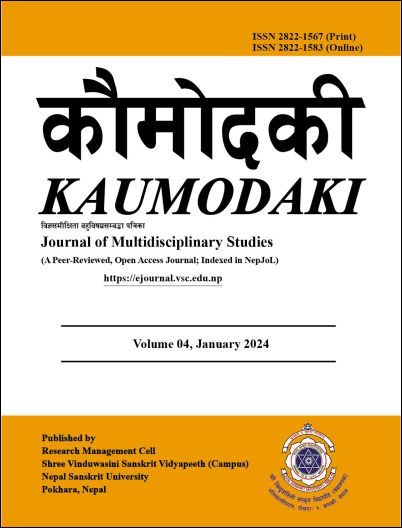Negative Capability in Keats’s “Ode to Autumn”
DOI:
https://doi.org/10.3126/kdk.v4i1.64550Keywords:
Autumn, negative capability, ode, personification, sensuousnessAbstract
This paper examines and analyzes the ideations of negative capability postulated by Keats in his “Ode to Autumn”. His negative capability embraces uncertainty, doubt, and ambiguity in poetry, without seeking to impose rational explanations or resolutions. He employs the third- person narration, depersonalized imagery, universal themes, and avoids using personal pronouns in writing the odes. These aspects expose his fundamental concept of negative capability because he desires to remain in doubt, uncertainty, and mysteries by the process of depersonalization of the authorship. He explicates the true nature of beauty in his “Ode to Autumn”. He embraces the mystery and complexity of the ripening of fruits like grapes, apples, gourd and hazelnuts. The bee-hives are filled with honey. The season embodies the contrasting qualities with their harmonious coexistence. Keats explores the occupations of autumn. The season performs various activities in the form of a reaper, a winnower, a gleaner and a cider –presser. Keats juxtaposes the activities of life as well as the passivity/ death in these occupations. He introduces the songs of autumn. The mournful sounds of the gnats, the bleating of the lambs, the singing of the crickets, the whistling of the redbreast and the twittering of the swallows offer the music of autumn. The ambiguities of the abundance and the decline in these songs reflect the cyclical nature of the autumn season. This paper applies the dynamics of the qualitative approach, with an interpretive research design to unveil the beauty of the autumn season.
Downloads
Downloads
Published
How to Cite
Issue
Section
License

This work is licensed under a Creative Commons Attribution-NonCommercial 4.0 International License.
This license enables reusers to distribute, remix, adapt, and build upon the material in any medium or format for noncommercial purposes only, and only so long as attribution is given to the creator.




